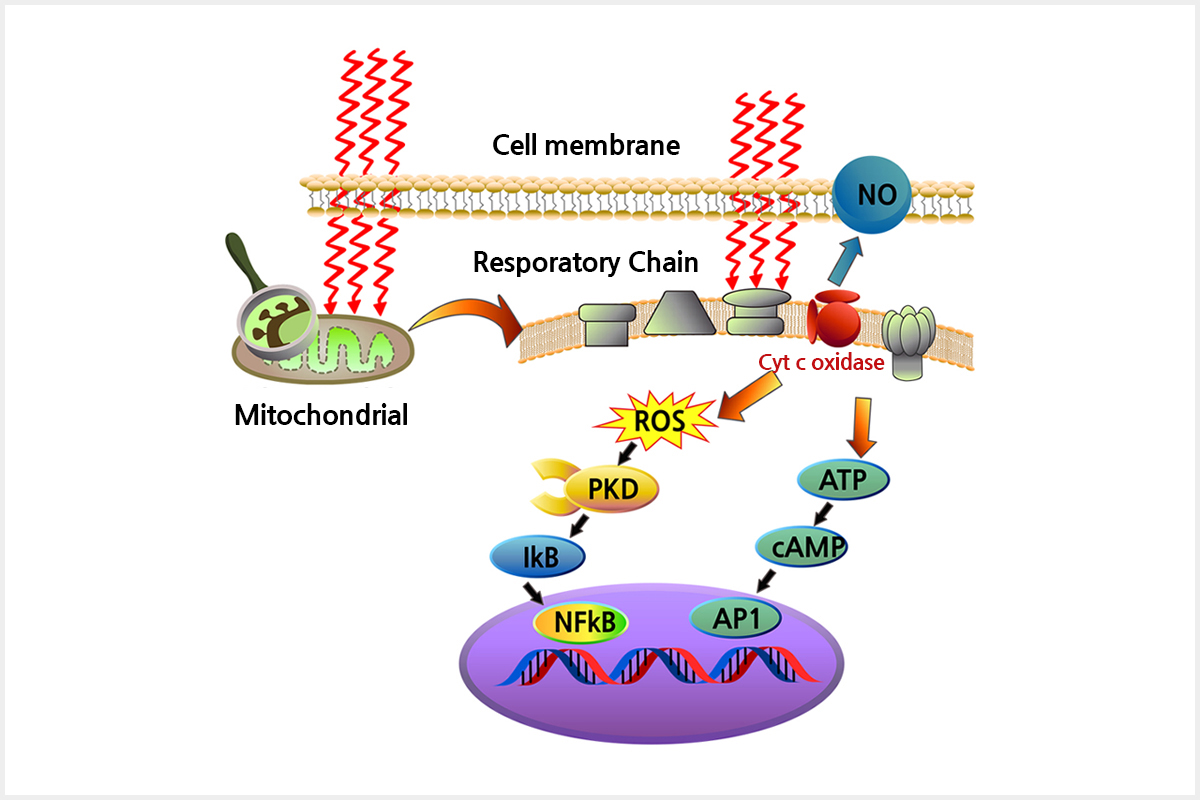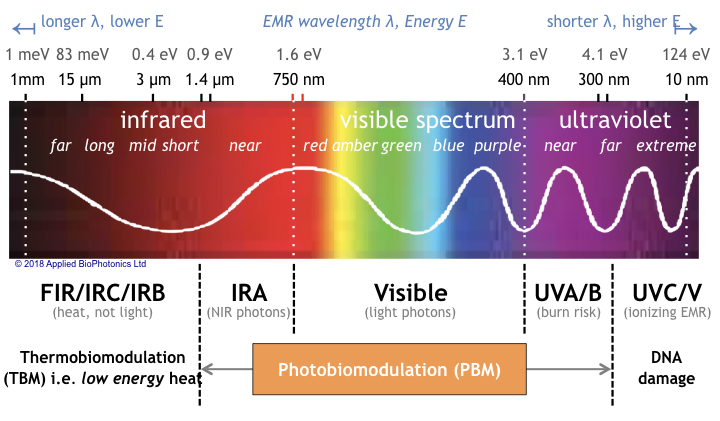The Of Photobiomodulation
Wiki Article
Photobiomodulation for Dummies
Table of ContentsSome Ideas on Photobiomodulation You Should Know10 Simple Techniques For Photobiomodulation7 Simple Techniques For PhotobiomodulationPhotobiomodulation Things To Know Before You Get This
Laser treatment is a medical therapy that utilizes focused light to boost a process called. Throughout PBM, photons get in the tissue and interact with the cytochrome c complex within mitochondria. This interaction triggers an organic cascade of events that results in a rise in cellular metabolic process, which can in addition to accelerate the healing procedure.There is consensus that the application of a healing dose of light to impaired or inefficient cells results in a mobile action mediated by mitochondrial systems. Photobiomodulation. Researches have shown that these changes can influence pain and inflammation, as well as, cells repair service
Adjustments in ATP, reactive oxygen species and nitric oxide follow light absorption by Cc, O. These results are redox state and dosage dependent.

Photobiomodulation Fundamentals Explained
PBM gadgets have been gotten rid of for advertising and marketing by FDA with the Premarket Notification/510( k) process as adjunctive devices for the temporary alleviation of discomfort. These clearances were based on the discussion of medical data to sustain such claims (Photobiomodulation). In this treatment, a light is placed near or in call with the skin, allowing the light power (photons) to permeate cells where it interacts with chromophores situated in cells resulting in photophysical and photochemical adjustments that cause alterations at the molecular, mobile and tissue degrees of the bodyInterestingly, current study suggests that light can boost efficiency in regular tissues and cells. The prospective applications of PBMT are countless and are being checked out experimentally at the basic scientific research, pre-clinical and scientific degree. The existing medical usages are for the relief of discomfort and inflammation and the therapy of sports injuries.

The treatment criteria and number of sessions required for PBMT are reliant upon place and cause. PBMT usually calls for even more than one treatment for optimum discomfort relief.
Top Guidelines Of Photobiomodulation
Treatment parameters for PBMT were initially established making use of cells artificial insemination and in little pet versions. These treatment specifications normally had a low irradiance and fluence and functioned well Full Article for cutaneous applications. Nevertheless when clinicians began to make use of PBMT to deal with structures that lay much view it now deeper in the body, they used these specifications with adverse results.
We currently recognize that these adverse studies were due to wrong gadget and treatment criteria for transcutaneous therapy of much deeper frameworks. Current advances in laser treatment gadgets and more research into the appropriate dosages have substantially improved the results of PBMT. For treating deep cells, the wavelength of light used establishes the depth of penetration right into a tissue.
It is crucial that a medical professional makes use of the suitable wavelength of light and criteria to treat a condition. One wavelength and one collection of look at this site therapy specifications will not work for all conditions. Negative adverse effects have actually not been reported from using PBMT (Photobiomodulation). Updated June 27, 2016Juanita j
Light therapy is a non-invasive treatment that functions by enhancing the ability of the cell to develop power (ATP) to recover the area being dealt with. Therefore, it can lower inflammation, swelling, and pain in the area. Research study around is increasing, with more extensive research study papers linked listed below for those who would love to discover more.
What Does Photobiomodulation Do?
In the first experiment, Dr. Endre Mester, utilized shaved rats and observing just how the laser impacted their ability to expand hair contrasted to the team that was not obtaining LLLT. He discovered that the group of mice getting LLLT were able to grow their hair back quicker than the group of mice that really did not get LLLT (Hoon C, et al; 2012).This treatment is called this means to distinguish the distinction between the lasers some occupations utilize to reduce (eg. in surgical treatments, or oral treatments). Low-level light treatment is painless, non-invasive therapy. It is made use of to lower inflammation, swelling, and chronic joint conditions, minimize discomfort and accelerate wound healing of nerves and tissues (Hoon C, et al; 2012).
LLLT has a biphasic reaction, implying that lower doses are usually seen to be much more advantageous than greater doses. That being stated, dosages higher or lower than the optimal dosage does not impact (Hoon C, et alia; 2012). Therefore, it can be challenging to have researches on LLLT with a lot of parameters.
Some companies incorporated both (LED and laser) to give an extra well-shaped therapy since lasers can penetrate much deeper than LED and infrared light (Norman Doidge, The Mind's Method of Healing, 2015). During treatment, the area that is being dealt with is revealed to LED light from a Biography, Flex Laser, which goes to 660 nm wavelength, complied with by infrared light at 830-840 nm wavelength.
Report this wiki page